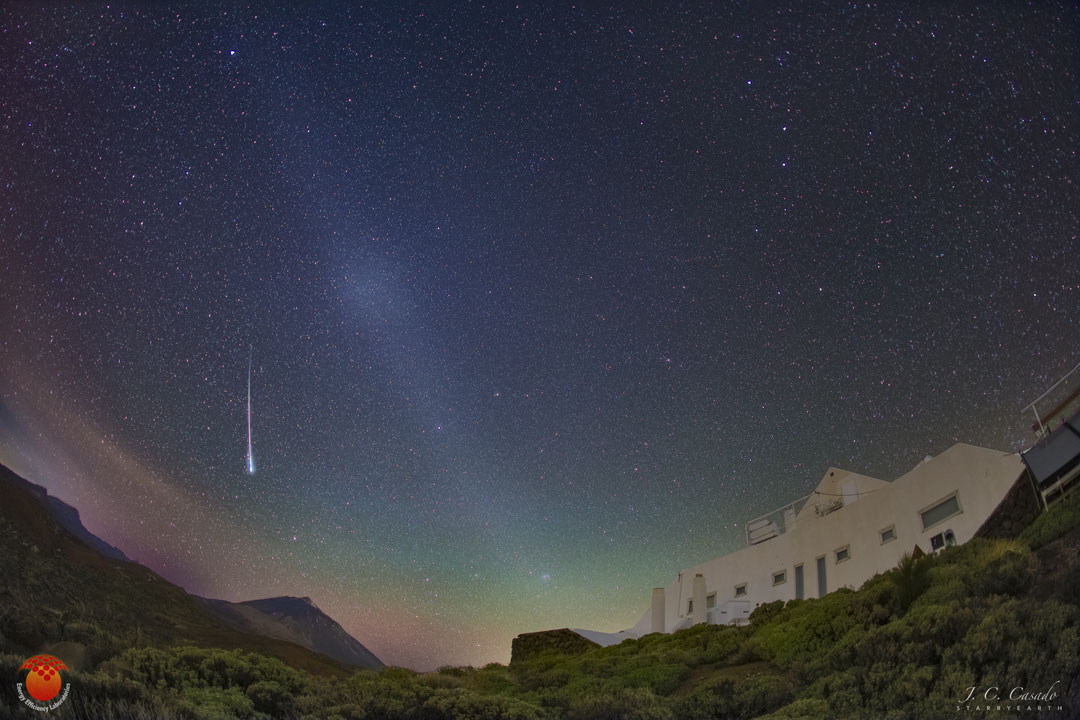流星和Gegenschein
(原标题: A Meteor and the Gegenschein)
2021-05-12
浏览次数: 146
在与太阳相反的方向,夜空是最暗的吗?否。事实上,在极其黑暗的天空中,从太阳180度周围可以看到一种罕见的微弱光,称为gegenschein(德语为“反光”)。gegenschein是阳光被星际尘埃微粒反向散射而成的。这些尘埃颗粒是小行星上毫米大小的碎片,在行星的黄道面上运行。这张照片摄于去年3月,是迄今为止拍摄的最壮观的gegenschein照片之一。这张在西班牙加那利群岛泰德天文台拍摄的极暗天空的深曝光照片显示了黄道光延伸的一部分。值得注意的背景物体包括一颗明亮的流星(左边),北斗星(右上)和北极星(最右边)。这颗流星几乎指向西班牙最高的山峰泰德山,而在右边可以看到金字塔太阳实验室。在白天,从飞机上可以看到一种叫做“荣耀”的现象,即反射太阳对面的空气或云层。
查看原文解释
Is the night sky darkest in the direction opposite the Sun? No. In fact, a rarely discernable faint glow known as the gegenschein (German for "counter glow") can be seen 180 degrees around from the Sun in an extremely dark sky. The gegenschein is sunlight back-scattered off small interplanetary dust particles. These dust particles are millimeter sized splinters from asteroids and orbit in the ecliptic plane of the planets. Pictured here from last March is one of the more spectacular pictures of the gegenschein yet taken. The deep exposure of an extremely dark sky over Teide Observatory in Spain's Canary Islands shows the gegenschein as part of extended zodiacal light. Notable background objects include a bright meteor (on the left), the Big Dipper (top right), and Polaris (far right). The meteor nearly points toward Mount Teide, Spain's highest mountain, while the Pyramid solar laboratory is visible on the right. During the day, a phenomenon like the gegenschein called the glory can be seen in reflecting air or clouds opposite the Sun from an airplane.
